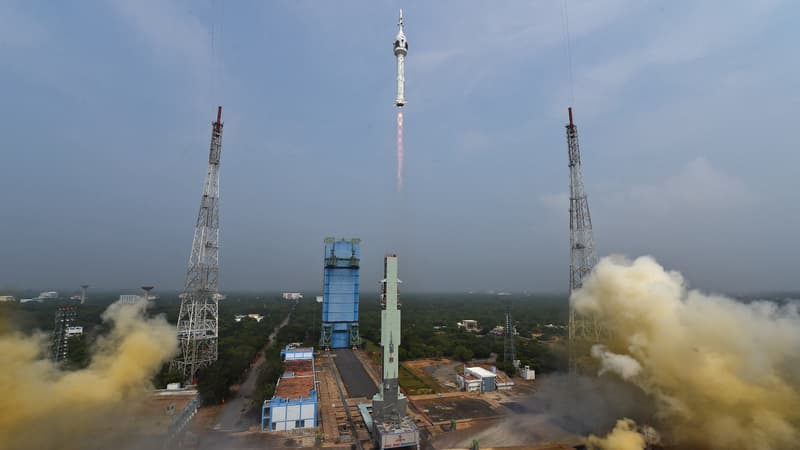This is another important step in India’s space ambitions. The country successfully launched the first unmanned test of its future manned orbital mission on Saturday. The Gaganyaan (space vehicle) mission aims to send three crew members to Earth orbit in 2025, an important indicator of the technical capabilities of the Indian Space Research Organization (ISRO).
Saturday’s rocket launch tested the crew module’s emergency escape system, which separated from the booster and landed gently about 10 minutes after liftoff.
20 important tests planned
Takeoff was postponed for two hours due to bad weather and an engine problem.
ISRO will carry out a series of 20 major tests, including taking a robot into space, before the next manned mission takes place.
Gaganyaan is the first mission of its kind for India and is estimated to cost $1.08 billion, according to ISRO. The country plans to send astronauts beyond the limits of the Earth’s atmosphere for three days before they land safely in Indian territorial waters.
A man on the Moon in 2040
Prime Minister Narendra Modi has announced plans to send a man to the Moon by 2040, following a successful year for India’s space programme.
In August, India became the fourth country to land an unmanned spacecraft on the Moon, after Russia, the United States and China. The following month, ISRO launched a probe to observe the outermost layers of the Sun from solar orbit.
India has always matched the achievements of established space powers at a fraction of their cost.
India’s aerospace program has a relatively modest budget, but has grown significantly since its first attempt to place a probe into orbit around the Moon in 2008.
A joint mission with Japan should allow a probe to be sent to the Moon between now and 2025, as well as a mission to Venus within two years.
According to industry experts, India manages to keep costs low by replicating and adapting existing space technology for its own purposes, particularly thanks to the large number of highly qualified engineers who pay much less than their foreign counterparts.
Source: BFM TV


